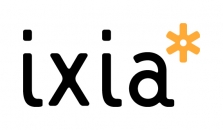Evaluation of Lottery Funded Public Art Projects
Introduction
Since the early 1990's the Arts Council of England (changed from the Arts Council of Great Britain in 1994) has promoted the concept of percent-for-art. This concept is the accepted mechanism for ensuring the effective inclusion of commissioned art within building projects, and encouraging the collaboration between artists and construction professionals.
As part of the promotion of this policy and in recognition of the growing importance of this activity within the practice of artists and in quality building projects, it was decided to include percent-for-art as a criterion of capital lottery funding, when ACE became a Lottery distributor in 1995.
All applicants were required to address 8 criteria in their applications for Lottery-funded capital projects to ACE. Number 7 required applicants to address 'the contribution of artists, craftspeople, and film and video makers' to their building project.
At the close of the first ACE Capital Lottery scheme (March 2000), and to inform the development of the new capital lottery scheme to be launched in the summer of 2000, it was decided in late 1998 to undertake a detailed evaluation of the impact of the mandatory consideration of this criterion had had upon ACE Lottery-funded capital building projects. The results of this evaluation are contained within the following document.
However, the evaluation was performed with two constraints. The first was that, obviously, only completed or near completed projects could be effectively evaluated. This lead to a sample, not necessarily representative, of 230 completed projects, representing total grant (less matching funding) from ACE Lottery of £37 million (this is compared with a total project number at the scheme's close of 2,021, with a total grant of approximately £1 billion).
It is hoped that we will be able to institute an on-going programme of evaluation as the first capital programme nears total completion; currently set for 2004-05. It should be noted that in 1998-9, this evaluation project could not include some of the very largest capital Lottery construction projects such as the ROH, RNT, Lowry Centre, Baltic, Tate Modern, or Royal Court Theatre.
Secondly, due to limited resources, the project was limited to a strict evaluation of data, a quantification rather than a qualification. At set-up ACE capital Lottery had not been able to institute mechanisms for full data capture on granted projects. Hence, this evaluation is as much concerned with the simple capture of raw data as it is with analysing that data.
Thus, when addressing this report, the informed reader will find much analysis and data breakdown absent. This will be analysed, since, we hope to proceed to a qualification stage (quality assessment) of the ACE Lottery spend on public art and percent-for-art commissioning, when resources allow. This will be in conjunction with a large-scale research project looking at the benefits of public art, and piloting a code of practice to be conducted by the Public Art Forum in 2000-02.
Finally, as will be obvious, this evaluation did not restrict itself to simply the criterion 7 percent-for-art commissions. Also evaluated were the ACE capital Lottery stand-alone public art projects such as the Angel of the North and Artranspennine 98.
We feel that, overall, the inclusion of stand-alone public art work and percent-for-art within ACE capital Lottery projects has been a success. It has benefited artists, organisations (many of which had never commissioned a visual artwork before) and, perhaps most importantly, for the publics that form the audiences for these organisations and their venues. Thus this criterion for percent-for-art will be retained in our new programme, as will be the ability to fund large-scale public art works.
However, there has been much to be learned from this first programme. While this report is quite tightly focussed on a particular time in the funding of public projects, it is hoped that its conclusions and any following qualitative work will be relevant to wider public art practice; hence its presence on the Public Art South West website.
Ben Heywood
Visual Arts Officer - Commissions, Architecture and the Built Environment Arts Council of England
Any comments, criticisms or suggestions prompted by this research would be gratefully received. Please e-mail to [email protected] or phone direct on 020 7333 0100.
Follow this link to download the full evaluation document
as a Rich Text Format document: 608Kb

